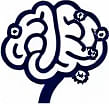Ideation Methods for Enhanced Creativity and Problem-Solving
 by Max Miller
by Max Miller
Ideation methods offer practical tools for generating innovative ideas in psychology, business, and cognitive growth. This article examines key techniques like brainstorming and mind mapping, showing how they foster better thinking and decision-making in everyday scenarios.

Ideation methods serve as essential tools for fostering creativity and solving problems effectively. These approaches help individuals generate fresh ideas in various contexts, from professional settings to personal development.
One fundamental technique is brainstorming. This method involves gathering a group to freely share thoughts without immediate judgment. By encouraging open expression, brainstorming can lead to unexpected solutions in business challenges. For instance, teams use it to develop new products by building on each other's ideas.
Another valuable approach is mind mapping. This visual technique starts with a central concept and branches out into related ideas. Mind mapping aids in organizing thoughts and revealing connections that might otherwise remain hidden. In psychology, it supports cognitive growth by helping people explore emotions and behaviors more deeply.
SCAMPER is a structured method that prompts creative thinking through specific questions. For example, it asks users to substitute elements or combine ideas in novel ways. This technique proves useful in business for innovating processes and in cognitive development for enhancing problem-solving skills.
In practice, these methods intersect with psychological principles. They draw from concepts like lateral thinking, which emphasizes breaking conventional patterns. Lateral thinking encourages viewing problems from new angles, promoting adaptability in dynamic environments.
To apply ideation methods effectively, begin with a clear goal. Define the problem at hand and set aside time for the process. In a group setting, ensure everyone contributes equally to maintain balance. For individual use, create a quiet space to focus on generating ideas without distractions.
Benefits in Business Strategies
Ideation methods offer significant advantages in professional contexts. They enable teams to address challenges creatively, leading to improved strategies and outcomes. For example, companies often employ brainstorming sessions to refine marketing plans, resulting in more engaging campaigns.
Moreover, these techniques support innovation by challenging existing norms. In business, regular idea generation can drive growth and competitiveness. Employees who practice such methods report higher satisfaction, as they feel more involved in decision-making processes.
From a cognitive perspective, ideation enhances mental flexibility. It trains the brain to form new neural pathways, aiding long-term development. Studies show that consistent use of these tools correlates with better memory and analytical abilities.
Practical Applications in Daily Life
Beyond professional settings, ideation methods can enrich everyday life. For personal growth, individuals might use mind mapping to plan career paths or set goals. This approach makes abstract aspirations more tangible and actionable.
In education, teachers incorporate SCAMPER to stimulate student engagement. By asking questions that modify familiar concepts, educators help learners develop critical thinking skills early on. Such practices contribute to overall cognitive advancement.
One real-world example involves entrepreneurs using ideation to launch startups. They combine elements from various methods to prototype ideas quickly. This iterative process reduces risks and accelerates progress.
Challenges may arise when implementing these techniques, such as overcoming initial resistance to change. However, with persistence, the benefits become clear. Over time, users notice improved idea quality and faster problem resolution.
Integrating Ideation into Cognitive Development
For lifelong learners, ideation methods provide a foundation for continuous improvement. They encourage exploration and experimentation, key aspects of personal evolution. By regularly practicing these techniques, individuals build resilience and adaptability.
In psychology, ideation aligns with theories of creative cognition. It supports the idea that creativity stems from diverse experiences and perspectives. Professionals in this field often recommend these methods for therapy or self-reflection.
To maximize effectiveness, combine ideation with reflection. After generating ideas, review them to assess feasibility. This step ensures that creativity translates into practical results.
Ultimately, ideation methods empower people to think more innovatively. Whether in business, psychology, or daily routines, they unlock potential and drive positive change. By adopting these approaches, curious minds can achieve greater cognitive heights and meaningful accomplishments.
